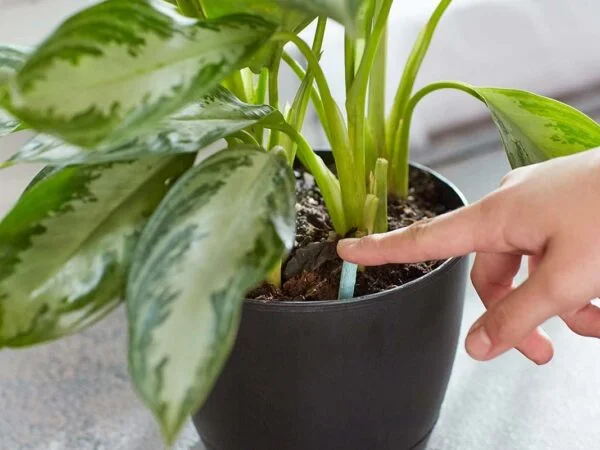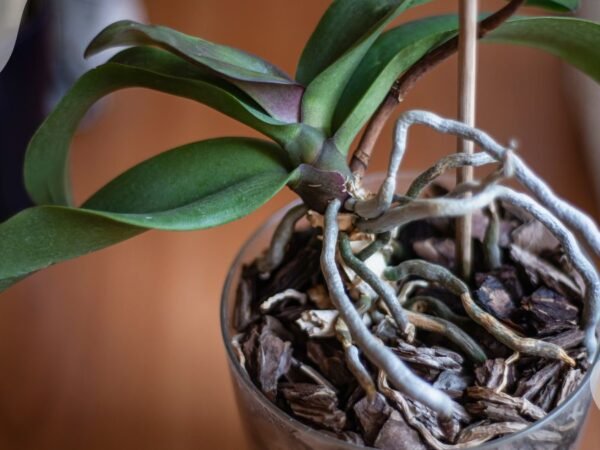Curious about the secret to flourishing orchids? It all comes down to light. Understanding the specific lighting and watering needs of these delicate houseplants is key to their growth and blooming success. But what type of light do orchids actually need? In this post, we'll dive into the fascinating world of orchid care and shed light on the ideal lighting conditions for these stunning flowers.
Whether you're a seasoned green thumb or just starting your journey as an orchid enthusiast, grasping the nuances of light requirements for many orchids is crucial. From bright but indirect sunlight to finding that sweet spot for optimal photosynthesis, we've got you covered with essential insights into creating a thriving environment for your beloved blooms. Let's illuminate the path to radiant and healthy orchids together.
Key Takeaways
-
Understanding the specific lighting and water needs of orchids is crucial for their healthy growth and blooming.
-
Ensure the proper light intensity by observing the natural signs of healthy lighting and adjusting the orchid's location as needed.
-
Consider both natural and artificial lighting options when providing light for indoor orchids, and maximize their exposure to light.
-
Regularly monitor orchids for signs of healthy lighting, water, and pot, and be aware of symptoms indicating inadequate or excessive light.
-
Adjust water, light levels throughout the seasons to mimic natural changes in light, and maintain optimal humidity and temperature for overall orchid health.
Understanding Orchid Lighting Needs
Light Intensity
Orchids, like other plants, require the right amount of light and water to thrive. Different orchid species have varying light intensity needs. For instance, Phalaenopsis orchids prefer moderate light, while Cattleya orchids thrive in bright light. Inadequate light can lead to poor flowering and stunted growth in orchids.
For example, if a Phalaenopsis orchid doesn't receive enough light, it may not bloom or produce weak flowers with faded colors. On the other hand, exposing a Cattleya orchid to low light levels can cause leggy growth with few blooms.
Natural vs Artificial
Natural sunlight and water provides a full spectrum of wavelengths that are beneficial for orchid growth. However, when growing orchids indoors or in locations with limited natural sunlight, artificial lighting sources such as LED and fluorescent lights become essential for supplementing natural light.
Balancing natural and artificial light is crucial for indoor orchid care because it ensures that the plants receive adequate illumination throughout the day without being exposed to excessive direct sunlight or prolonged darkness.
Measuring Light
To ensure optimal conditions for your orchids' growth and development, using a light meter is recommended. This tool helps measure the intensity of light reaching your plants by quantifying foot-candles or lux levels. By understanding these units of measurement and regularly monitoring the light levels around your orchids' environment, you can make informed decisions about their placement and adjust lighting arrangements as needed.
Proper Light Intensity for Orchids
Bright Indirect Light
Orchids require bright, indirect light to thrive, replicating the conditions of their natural habitat. Direct sunlight can harm orchids by causing leaf damage and sunburn. To provide the ideal lighting for orchids, position them near east or west-facing windows where they can receive bright, indirect light without being exposed to direct sun rays.
For example, placing an orchid on a table near an east-facing window ensures it receives gentle morning sunlight while avoiding the harsh intensity of midday rays. Similarly, a west-facing window provides ample brightness in the afternoon without subjecting the orchid to direct sunlight.
Avoiding Direct Sunlight
Direct sunlight can be detrimental to orchids as it may scorch their delicate leaves and impede growth. To shield orchids from intense midday sun exposure, utilizing sheer curtains or window filters is essential. These measures help diffuse strong sunlight and protect the plants from potential harm caused by direct exposure.
In outdoor settings, such as gardens or balconies where orchids are grown, shading becomes crucial during peak daylight hours. By providing shade through structures like pergolas or using shade cloth specifically designed for plants, outdoor orchids are safeguarded from excessive and harmful solar radiation.
Finding the Right Location for Orchids
Indoor Placement
Finding the right spot indoors is crucial. Place your orchids near windows that provide ample natural light. Rotate them regularly to ensure all sides receive even light exposure. In low-light areas, consider using supplemental artificial lighting to support their growth.
For indoor gardening enthusiasts, it's essential to understand that many orchids thrive in indirect sunlight and can be scorched by direct sun exposure. To prevent this, position your indoor orchids near east or west-facing windows where they can benefit from gentle morning or late afternoon sunlight without being exposed to harsh midday rays.
Consider investing in grow lights if you're unable to provide sufficient natural light for your indoor orchids. These lights mimic the spectrum of natural sunlight and can help maintain healthy growth for your delicate plants.
Outdoor Considerations
Outdoor placement of orchids also requires careful consideration. While these plants need adequate sunlight, direct exposure should be avoided as it may lead to leaf burns and other damage. Therefore, place outdoor orchids under shade, such as trees or patio covers, ensuring they receive dappled or filtered light throughout the day.
In addition to protecting them from direct sun and strong winds, shelter outdoor orchid plants from heavy rains or hailstorms which could damage their delicate blooms and foliage.
To optimize their growth outdoors, make sure your outdoor orchid receives enough morning and late afternoon sunlight while being shielded from intense midday sun rays which might scorch their leaves.
Natural Light Requirements for Growing Orchids Indoors
Window Selection
The window selection plays a crucial role in providing the right amount of natural light. South-facing windows are excellent for offering abundant sunlight, but they may necessitate shading during peak hours to prevent scorching delicate orchid leaves. On the other hand, east or west-facing windows provide ideal morning or late afternoon sunlight, which is beneficial for orchids as it's not too intense. For those delicate orchid species that require consistent but lower intensity light, north-facing windows are suitable.
For instance:
-
South-facing windows: Abundant sunlight but may need shading
-
East or west-facing windows: Ideal morning or late afternoon sunlight
-
North-facing windows: Consistent but lower intensity light
Seasonal Changes
Seasonal changes significantly impact the natural light exposure required by indoor orchids. It's essential to adjust lighting according to seasonal variations in daylight durations. Monitoring changing sun angles is vital to ensure that indoor orchids receive consistent and adequate light exposure throughout the year. Outdoor orchids might need relocation to adapt to seasonal shifts in sunlight patterns.
Artificial Lighting for Indoor Orchid Growth
Types of Lights
There are a few options to consider. LED grow lights are an excellent choice as they are energy-efficient and emit specific wavelengths that are beneficial for the growth of orchids. These lights provide the necessary light spectrum required for photosynthesis and can be adjusted to cater to different stages of plant development.
On the other hand, fluorescent lights serve as a suitable supplement to natural light for indoor orchids. They offer a balanced spectrum of light and produce minimal heat, making them ideal for maintaining consistent light exposure without risking damage due to excessive warmth.
In contrast, incandescent bulbs may not be the best primary source of light for indoor orchids as they generate excess heat. This type of bulb could potentially harm delicate orchids if used as the main source of artificial lighting.
Light Schedules
Establishing consistent daily light schedules is crucial when using artificial lighting for indoor orchids. It's important to mimic their natural environment by providing regular periods of illumination each day with appropriate light intensities. Adjustments should be made based on seasonal changes in daylight duration.
For most species of orchids, providing 12–14 hours of total daily light exposure is recommended when utilizing artificial lighting sources. This ensures that the plants receive adequate illumination essential for their growth and development throughout different stages.
Maximizing Light Exposure for Orchids
Reflective Surfaces
Utilizing reflective surfaces is crucial. Positioning your orchids near white walls or mirrors can help enhance the distribution of natural light, ensuring that all parts of the plant receive adequate illumination. However, be cautious not to overdo this as excessive use of reflective surfaces may lead to uneven or intense lighting, which could potentially harm your orchids rather than benefit them.
By strategically placing your orchids near these reflective surfaces, you're effectively maximizing the available light for their optimal growth. This means positioning them in a way that allows the reflection to reach different angles and areas around the plants. By doing so, you ensure that every part of your orchid receives an adequate amount of light needed for healthy development.
Rotation Practices
Regularly rotating potted orchids is essential in providing even exposure to both natural and artificial lighting sources. This practice prevents one-sided lighting from causing uneven growth patterns in your plants. Consistent rotation promotes balanced development of leaves and stems by ensuring that each side receives an equal share of sunlight.
Signs of Healthy Orchid Lighting
Leaf Appearance
Healthy orchids require the right amount of light to maintain vibrant green leaves. If the leaves appear discolored or yellow, it could indicate insufficient lighting, affecting photosynthesis. On the other hand, overexposure to direct sunlight may cause leaf scorching or browning.
For instance, if an orchid is placed in a dimly lit area for an extended period, its leaves might turn pale or even darkened due to inadequate light absorption. Conversely, positioning the orchid in direct sunlight for too long can lead to sunburn and discoloration of the leaves.
Growth Patterns
Adequate lighting promotes healthy growth with sturdy stems and abundant blooms on your orchid plant. In contrast, insufficient lighting can result in elongated and weak stems with limited flower production. Balanced lighting plays a crucial role in encouraging compact and well-branched growth.
For example, if you notice that your orchid's stem is growing tall but appears thin and weak compared to previous growths under better lighting conditions, this could be a sign of inadequate light exposure.
Symptoms of Inadequate or Excessive Light for Orchids
Discoloration
Yellowing or browning of leaves in orchids can be a sign of inadequate or excessive lighting. The color changes in the leaves serve as an important indicator of the plant's overall health and its specific lighting requirements. Monitoring these changes is crucial because it allows you to promptly adjust the lighting levels to ensure your orchid's well-being. For instance, if you notice yellowing or browning, it may indicate that your orchid is not receiving enough light. On the other hand, if the leaves are getting scorched due to excessive sunlight exposure, this could suggest that your orchid is receiving too much direct light.
It's essential to keep a close eye on any abnormal leaf discoloration as it could signal underlying issues with your orchid's environment. If you observe such symptoms, consider adjusting the location of your orchid within your home to provide it with more suitable lighting conditions.
Leaf Scorching
When orchids are exposed to excessive direct sunlight, their leaves can become sunburned or scorched. This type of damage indicates that the plants have received too much intense midday sun exposure. To prevent leaf scorching and maintain optimal growth conditions for your orchids, make sure they are shielded from harsh sunlight during peak hours by placing them in locations where they receive indirect light rather than direct sunshine.
Swiftly relocating affected plants to shadier areas can help mitigate further damage caused by leaf scorching and allow them time to recover from overexposure to intense light sources.
Adjusting Light Levels Throughout the Seasons
During the winter months, orchids require increased indoor lighting due to reduced daylight hours. This is essential for their growth and development when natural light is limited. To ensure optimal care during this period, it's crucial to shield outdoor plants from frost while still allowing them to receive sufficient sunlight. Monitoring temperature fluctuations is imperative as it helps in adjusting lighting for the best winter care.
In contrast, summer brings a need for different adjustments to cater to the specific requirements of orchids during peak heat. Providing additional shading for outdoor plants becomes necessary during these months to prevent overheating. Furthermore, increasing watering frequency while maintaining appropriate shading and ventilation in hot weather ensures that orchids thrive under these conditions. It's also important to adjust indoor plant placement strategically by avoiding direct exposure to intense summer sun while maximizing natural daylight.
When considering winter strategies, increasing indoor lighting can be achieved using artificial light sources such as LED grow lights or fluorescent bulbs designed specifically for growing plants indoors. These options help supplement natural light and provide adequate brightness levels required by orchids during darker days.
For outdoor plants in winter, utilizing protective coverings like frost cloths or row covers shields them from freezing temperatures without obstructing sunlight entirely. This allows them to continue receiving the necessary light while being safeguarded from harsh weather conditions.
Monitoring temperature fluctuations involves keeping a close eye on indoor temperatures where orchids are placed and making adjustments accordingly with heating systems or additional insulation if needed. This ensures that they remain within the ideal temperature range despite external variations.
Maintaining Optimal Humidity and Temperature for Orchids
Humidity Levels
Proper lighting is crucial for maintaining the optimal humidity levels around orchids. When considering orchid care, it's essential to monitor the humidity alongside lighting conditions, particularly in indoor environments. Balanced humidity ensures efficient transpiration and overall plant health. For example, if an orchid receives too much light without adequate humidity, it may lead to excessive moisture loss through transpiration, resulting in dehydration and stress for the plant.
Temperature Impact
The type of light that orchids need also influences the ambient temperature around the plant, directly impacting its growth. It's important to maintain suitable temperature levels corresponding with the specific lighting requirements of each orchid species. For instance, some orchids may require brighter light with warmer temperatures during their active growing seasons while needing lower light levels and cooler temperatures during their dormant periods.
Closing Thoughts
You've now got the lowdown on giving your orchids the spotlight they deserve. Understanding their light needs, finding the perfect spot, and balancing natural and artificial light are crucial for their well-being. Keep an eye out for those telltale signs of healthy lighting and make adjustments as needed throughout the seasons. Remember, it's all about creating the Goldilocks of light conditions – not too much, not too little, but just right for your orchids to thrive.
Now it's time to put your newfound knowledge into action! Take a good look at your orchid setup and see where you can make improvements. Your green thumb is itching to give those orchids the best light possible, so go ahead and show them some love. Happy growing!
Frequently Asked Questions
What type of light do orchids need?
Orchids generally need bright, indirect light. In nature, they thrive under the dappled light of the forest canopy. When grown indoors, placing them near an east or west-facing window is ideal to provide the right amount of sunlight without direct exposure.
How can I tell if my orchid is getting enough light?
Check for healthy green leaves that have a slight yellowish-green hue. If the leaves are dark green and floppy, it might indicate not enough light. On the other hand, if they turn pale or red and develop brown spots, your orchid may be receiving too much light.
Can I use artificial lighting for my indoor orchids?
Yes, you can supplement natural light with artificial grow lights to ensure your orchids receive adequate illumination. LED grow lights are particularly effective as they mimic natural sunlight and allow you to control intensity and duration according to your specific orchid's needs.
Should I adjust the light levels for my orchids throughout different seasons?
Absolutely! As daylight length changes with each season, adjusting your indoor lighting accordingly will help replicate natural conditions. During winter when there's less sunlight, consider increasing artificial lighting while reducing it during summer when days are longer.
What role does proper lighting play in maintaining healthy orchids?
Proper lighting is crucial as it fuels photosynthesis - the process through which plants produce energy from light. Without adequate illumination at optimal levels, your orchid won't be able to manufacture sufficient food reserves essential for growth and blooming.
Image Source: Paid image from CANVA




